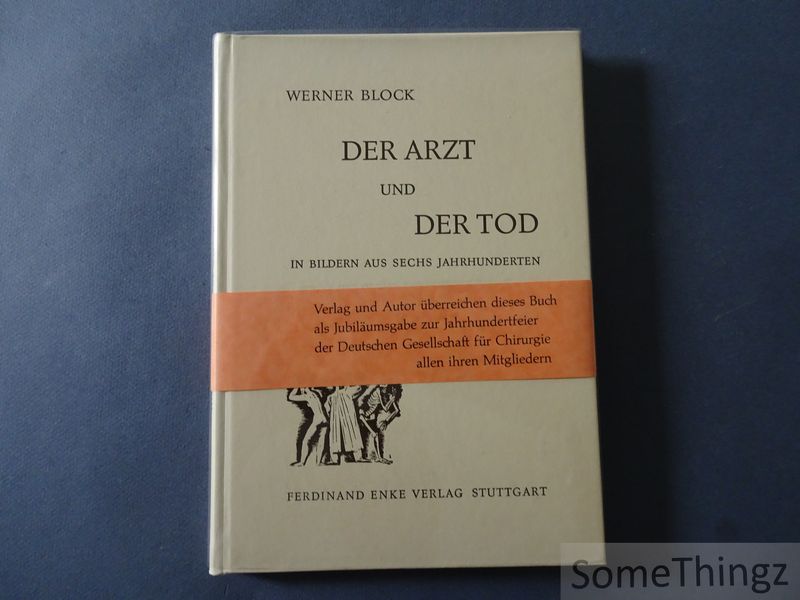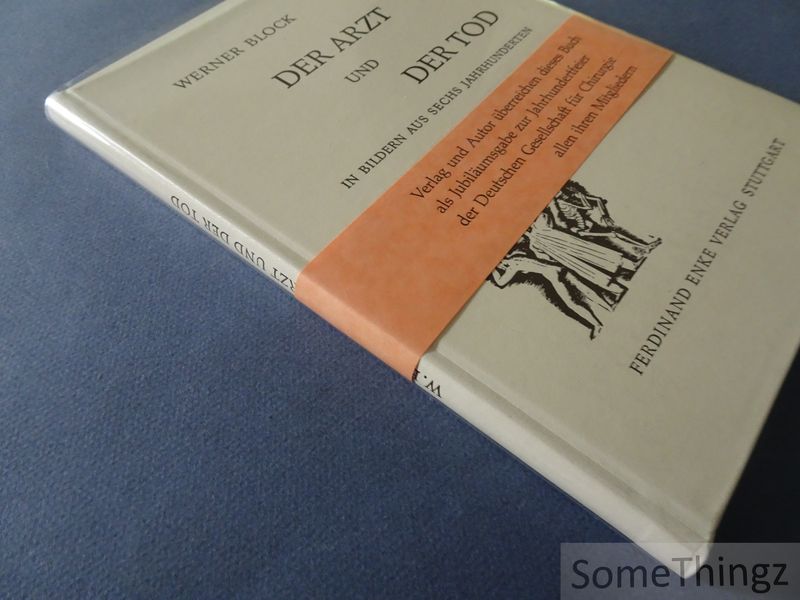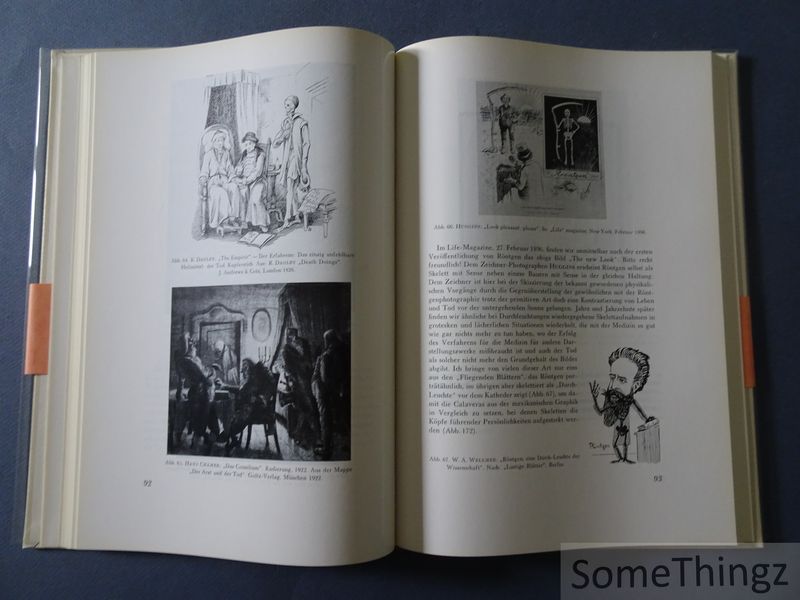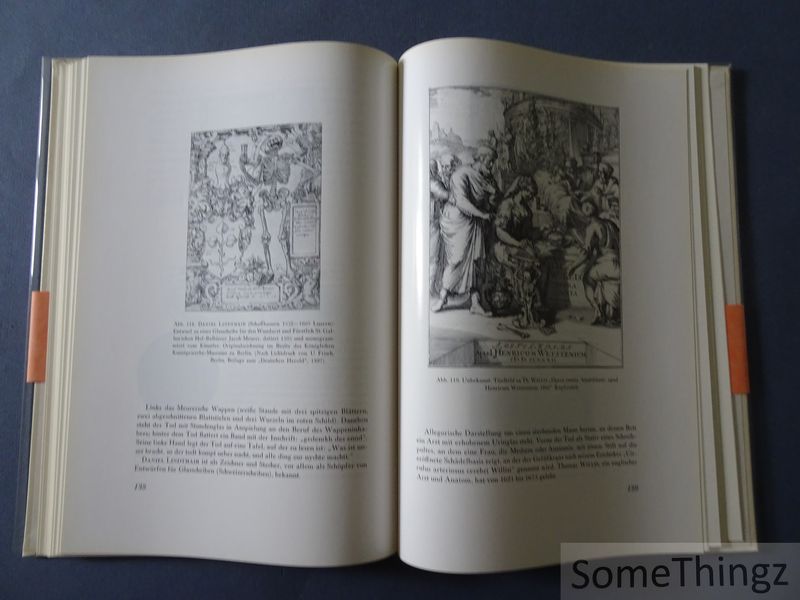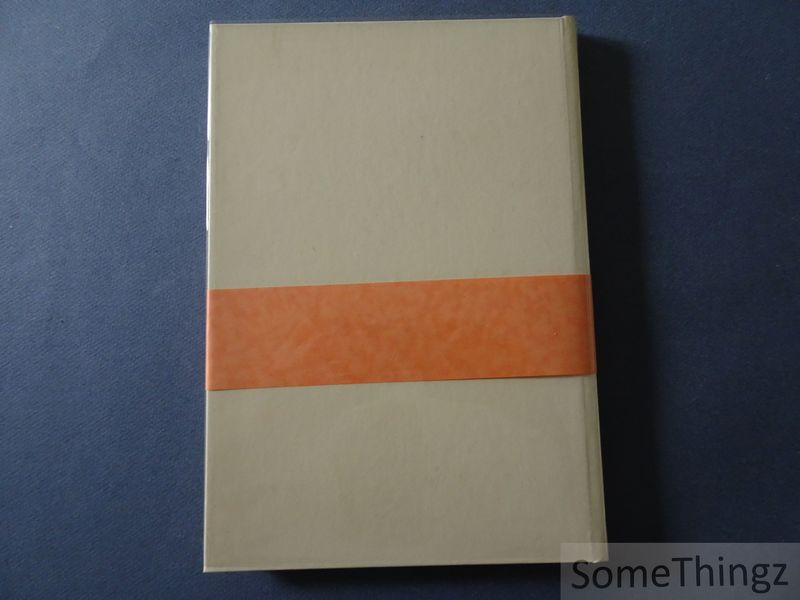BOOKS
Block, Werner.
Der Arzt und der Tod.
Stuttgart, Ferdinand Enke, 1972.
€ 22.50
Bound, leatherlook binding with orig. cellophane dustjacket and orig. bellywrapper, 194pp., 20x28cm., richly illustr. in b/w., a few ills. in col., in very good condition. As new. Limited to 3000 copies.
In this remarkable volume, Werner Block presents a visual and cultural journey through six centuries of depictions of the physician and death. With nearly 200 illustrations drawn from his vast collection of danse macabre imagery, the book explores the evolving relationship between medicine, mortality, and the arts. This richly produced edition, with a fine hardcover and scholarly detail, appeals to medical historians, art historians, and collectors interested in the cultural history of death and healing. The book combines medical cultural history and visual art: Werner Block uses nearly 200 illustrations spanning six centuries to show how doctors and death have been depicted?sometimes as helpers, sometimes as victims or opponents of death. Based on his extensive collection of graphic works related to "Totentanz" (Danse Macabre), it offers a historical-visual exploration of death, healing, and symbolism in medicine, aimed at both art and medical enthusiasts. Werner Block (5 March 1893 ? 19 September 1976) was a German surgeon and a passionate collector of death images ("Totentanz"). He studied in Freiburg and Strasbourg and, from 1919, worked as an assistant to August Bier in Berlin. Between 1924 and 1930, he was chief physician in Witten, and later head of the surgical department at St. Getruden-Krankenhaus in Berlin. In 1936, he received his doctorate in the field of complications of bone traction procedures and was appointed associate professor at the FU Berlin in 1951. His research focused on fracture treatment, blood flow, and wound infection, including studies on Rivanol. He was very active within the Deutsche Gesellschaft für Chirurgie (German Society for Surgery) and held various board positions; he later received honorary membership and awards. His extensive Totentanz collection (over 890 items) was acquired by the University of Düsseldorf in 1976 and formed the basis of the graphic collection "Mensch und Tod".

